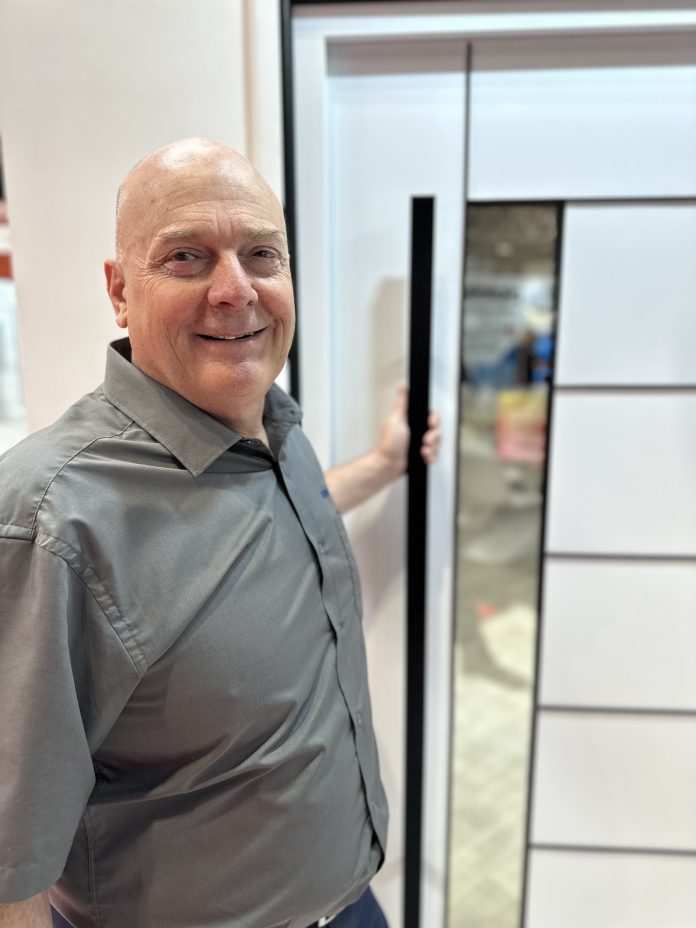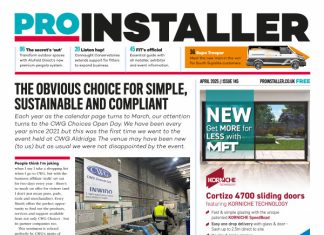Are composites still king, or have aluminium entrance doors started to become a more favourable option for homeowners? Danny Williams, director of Gerda Doors UK, argues that aluminium (and steel) is now a far superior option for consumers who want the best performance, security and quality of finish.
Composite doors have come a long way in the last 25 years or so, and on paper they’re still an attractive option for many homeowners who are looking for a modern, secure front door for their property.
But while consumers can now enhance their property’s kerb appeal with a wealth of different colours, hardware and glass options, composites remain fundamentally flawed, says Danny Williams, managing director of Pioneer Trading Company which has the license to distribute the Polish Gerda residential entrance door in the UK .
“The main problem, as most installers will know, is that the construction of composites means that they are vulnerable to variations in temperature on the interior and exterior faces,” he says. “You’ve got a number of different materials – including foam, timber and a GRP skin – that are all designed to work together to keep warm air from getting out, and cold air from coming in.
“But those materials will also all work against each other when the surfaces of the door are subjected to hot and cold temperatures,” he continues. “As a result, they can warp and twist and, in many cases, the door will simply not operate as it should.
“In some extreme instances, homeowners may not even be able to secure their property at all, because the door will have bowed or twisted to such an extent that the hardware no longer functions.
“If it’s a south facing door, and the customer has specified a dark blue, black or grey – a colour that will really soak up the heat, then it’s an even greater risk.
“Entrance doors should be an easy win for installers,” continues Danny. “They’re a relatively high margin product and quick to fit, but if you’ve got to deal with costly remedial work – or worse, bad reviews – then ultimately, they can be more trouble than they’re worth.”
It’s these issues with performance that led Danny to search for a better entrance door solution for the UK market. His journey led him to Gerda Doors, a well-respected and well-established brand in mainland Europe, and one that has been designed to operate faultlessly, even in much harsher weather conditions.
The key to that inherent strength are the components used in the construction of all Gerda doors; a highly energy efficient polyurethane core – proven as the best material for minimising heat transfer – with incredibly strong steel and aluminium facings, all combined with a thermally broken aluminium frame.
The result is a range of doors that offer U Values as low as 0.74W/m2k, way ahead of the minimum requirements for energy efficiency, as well as unbeatable strength and security.
Crucially, thanks to that sleek, contemporary aluminium finish, Gerda Doors not only perform better than most composites, but they offer a level of aesthetics that most inferior products will struggle to replicate as well.
“Aluminium products in general have enjoyed strong demand in recent years, and we continue to see product development continue at pace,” says Danny. “That’s brought about advancements in performance, with lower U values, but also increased efficiencies in manufacture and installation.
“But one of the biggest appeals, for end users, is the premium look and feel of aluminium,” he continues. “Gerda Doors brings that desirable aesthetic to the entrance door market, but at a price point that positions them just above what you would expect to pay for a higher end composite.”
Danny adds that the opportunity to upsell into this unique niche, is opening up valuable sales for Gerda dealers, especially for those that can demonstrate the difference in a showroom environment.
“The difference in price is relatively modest, but when homeowners can appreciate the superior quality and finish, simply by opening and closing a Gerda door and hearing that solid ‘thunk’, it practically sells itself.
“That’s because composites are just not able to compete with the engineering of an aluminium and steel product that offers such a compelling combination of superior performance, quality of finish and contemporary design.”












